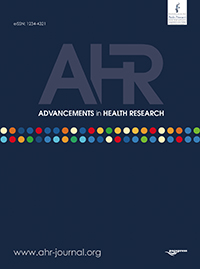The significant role of point-of-care coagulation studies: shorter cardiac surgery, better renal function and tranexamic acid cannot alone reduce early platelet transfusions

All claims expressed in this article are solely those of the authors and do not necessarily represent those of their affiliated organizations, or those of the publisher, the editors and the reviewers. Any product that may be evaluated in this article or claim that may be made by its manufacturer is not guaranteed or endorsed by the publisher.
Authors
After cardiopulmonary bypass (CPB) approximately 20% of patients require platelets. In our safety-net hospital, the incidence of platelet transfusion is over 40%, perhaps attributable to our prevalent risk factors of renal dysfunction, CPB duration, and absence of tranexamic acid (TXA). We designed this retrospective observational study after surgeons decided against offering CPB in the presence of these risk factors. The Institutional Review Board (IRB) approved the protocol and waived informed consent. Our hypothesis was the number of platelet transfusions in the consecutive patients during the first ninety days of 2022 would be higher than those in 2023. Confounders included platelet counts and hemoglobin immediately before platelet transfusion. Secondary outcomes were postoperative day two creatinine and other components transfused. Preoperatively creatinine trended higher in 2022 at 1.5 vs 1.1, reaching significance postoperatively at 1.9 vs 1.1 (p=0.02). CPB decreased from 174 to 124 min (p=0.06). TXA use increased from 18 of 28 to 26 of 29 patients. Platelets during CPB increased (142 to 173, p=0.06). Hemoglobin nadirs rose (8 g/dL to 8.8, p=0.04). Platelet units transfused per patient tended to rise (0.7±1 vs 0.93±1.5); if exposed, patients tended to receive more units (2.1±1.3 vs 2.5±1.4) sooner. These data support a need for thromboelastograms with platelet mapping immediately post-CPB.
How to Cite

This work is licensed under a Creative Commons Attribution-NonCommercial 4.0 International License.
PAGEPress has chosen to apply the Creative Commons Attribution NonCommercial 4.0 International License (CC BY-NC 4.0) to all manuscripts to be published.
Similar Articles
- Chelsi J. Flanagan, Ross Dies, Connor J. Plaisance, Giustino Varrassi, Matthew J. Sharpe, Christopher L. Robinson, Shahab Ahmadzadeh, Adam M. Kaye, Sahar Shekoohi, Alan D. Kaye, Systematic review of endoscopic botulinum toxin injections for refractory gastroparesis , Advancements in Health Research: Vol. 2 (2025)
You may also start an advanced similarity search for this article.







